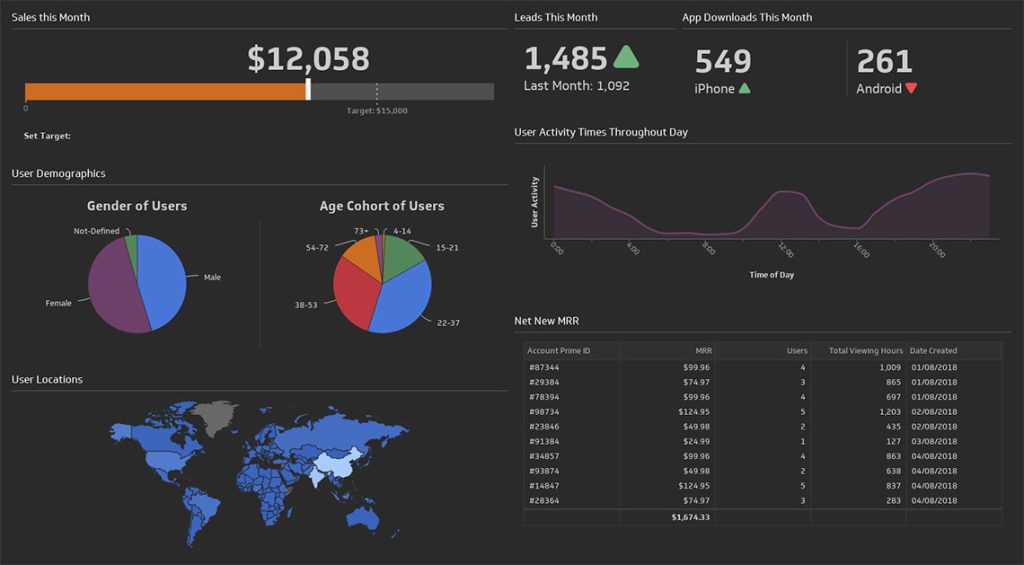In this article, we’ll discuss Cost-per-conversion (CPC) and Revenue attribution, as well as the customer lifetime value (CLV) and increased website traffic. Using these metrics will help you measure your digital marketing success. But there are many other KPIs to consider as well. For example, CLV is the percentage of leads that become MQLs. The quality of the leads you generate is also an important KPI.
Cost-per-conversion
If you want to know if your paid marketing is working, you should look at your digital marketing metrics. You should measure the cost of acquiring a single client, and then divide that figure by the number of paying clients. Also, you should make sure that your landing pages are designed to convert prospects into paying clients. A low CPA will reduce the overall cost of your marketing efforts. And, you should never forget to consider your Average Order Value when you’re measuring your Cost-per-acquisition.
If you are aiming to improve your business, you must monitor your digital marketing success with the help of KPIs. These are important because they provide quantitative data that can help you make decisions. Proper monitoring of your analytics can distill this information into clear and useful figures. You can improve your site activity, brand awareness, customer engagement, conversion rates, and overall sales by using the right KPI.
Revenue attribution
Attribution of revenue is a key concept in successful revenue generation. Revenue attribution helps determine the contribution of marketing efforts to a company’s revenue. This type of attribution allows marketers to track individual efforts, such as email, social media, website, and ad campaigns. It also enables marketers to determine which marketing efforts are more effective in generating revenue. Revenue attribution is a key digital marketing KPI, as it can help businesses understand their ROI and allocate their marketing budget more efficiently.
The importance of revenue attribution in content marketing cannot be overstated. It helps identify the factors that drive a sale and allows marketers to make necessary adjustments. Revenue attribution is crucial for understanding the buyer’s journey. When used properly, revenue attribution can give marketers an idea of which marketing tactics are working, and which ones are not. Once you understand the impact of different marketing efforts, you can optimize your marketing strategy and make the most of your content.

Customer lifetime value
In the world of digital marketing, customer lifetime value (CLV) is a key metric that can help you measure your business’ success. It measures how valuable your customers are over the long term, from the first purchase to the last. This is a great metric to track if you want to drive growth. The formula for CLV is easy to use and is based on three main components: revenue, average order value, and customer journey. By comparing these three important metrics, you can determine if your marketing strategy is working.
CLV is also a great way to gauge the impact of your marketing campaigns. You can use coffee shops as an example of the impact that marketing efforts have on CLV. The average sale at a local coffee shop is $4. If you can increase that number, you will have more repeat customers. If you’re looking for a way to increase CLV, consider using customer reference marketing. In this way, you’ll be able to build a rapport with a spotlighted customer and persuade new prospects to make a purchase.
Increased website traffic
Increased website traffic is a critical measure to track for the success of your digital marketing efforts. It provides you with a baseline for measuring the overall visibility and searchability of your website. However, getting more visitors onto your website is not enough – if you don’t generate any leads, this is only a symptom. To make the most of your traffic, you should focus on quality traffic – the type of visitors most likely to engage with your brand and become a customer.
While this may seem like an easy task, the difficulty lies in determining what to measure and why. Digital marketing teams must decide upon KPIs based on their goals, which can change over time. In addition, every digital marketing campaign has its own purpose. Hence, KPIs should be chosen according to these purposes, rather than focusing on specific metrics. For example, increased website traffic should be measured using metrics that can directly link to the sources of that website traffic – such as the number of visitors who have visited the website – instead of focusing on conversions.

